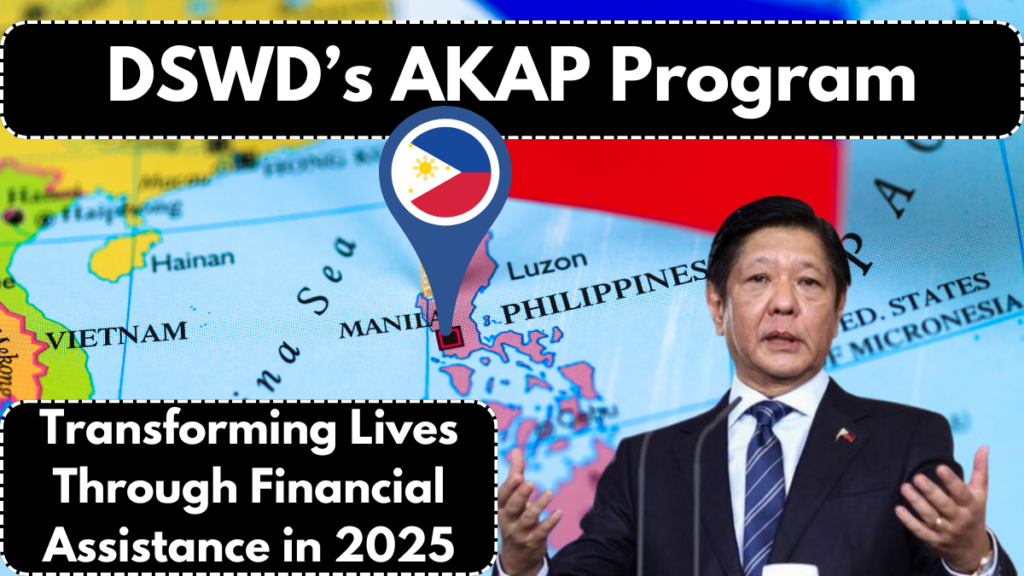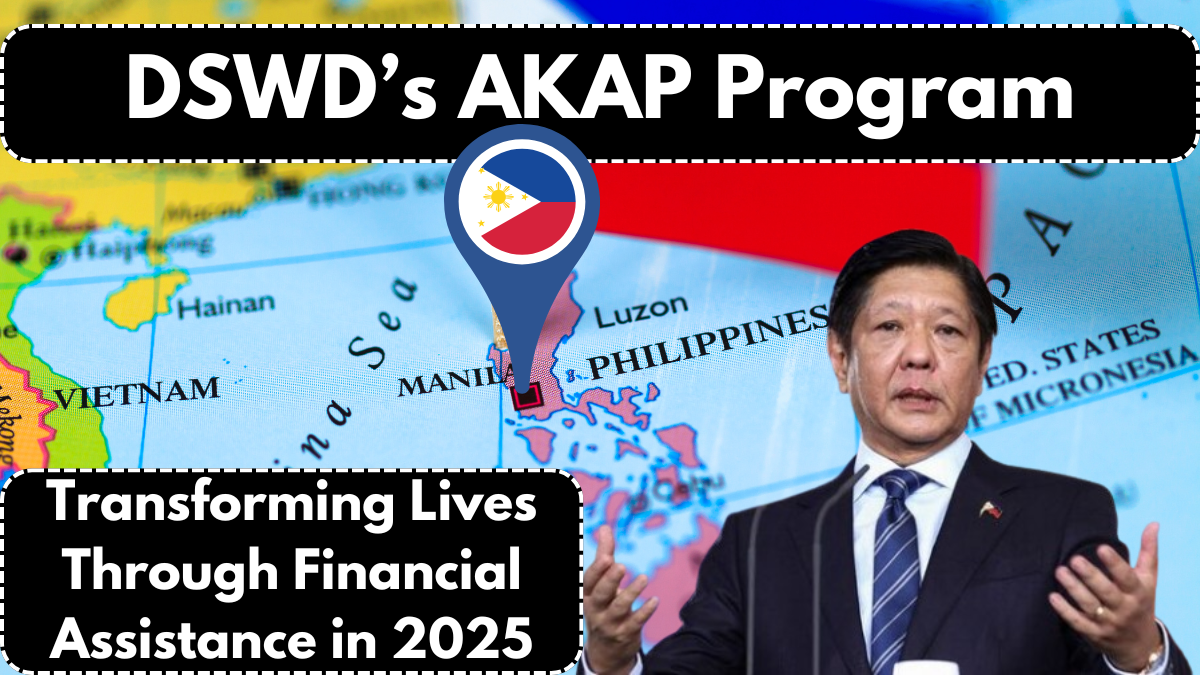The Department of Social Welfare and Development (DSWD) marked a major achievement in 2025 with the successful implementation of the Ayuda para sa Kapos ang Kita Program (AKAP). This initiative provided financial relief to nearly five million Filipinos facing economic hardship, ensuring they received much-needed support. The program effectively utilized PHP26.157 billion of its allocated PHP26.7 billion budget, achieving an impressive 99.31% utilization rate.

Understanding the AKAP Program
The AKAP initiative was designed to support families living below the poverty threshold, offering direct cash assistance of PHP5,000 per household. This financial aid was strategically distributed across various regions in the Philippines, with some, including Cagayan Valley (Region 2), Davao Region (Region 11), and Caraga (Region 13), achieving full fund utilization.
This program aligns with President Ferdinand R. Marcos Jr.’s directive to strengthen social protection efforts. Through stringent verification processes and collaboration with local government units (LGUs), the initiative successfully ensured equitable distribution to the intended beneficiaries.
Key Features of the AKAP Program
1. Eligibility Criteria
To qualify for AKAP assistance, households must meet the following conditions:
- The family’s income must fall below the poverty threshold.
- The household must not be a beneficiary of other government financial assistance programs.
2. Forms of Assistance Provided
AKAP extends beyond financial aid, offering comprehensive support to disadvantaged families:
| Type of Assistance | Description |
|---|---|
| Medical Aid | Financial assistance for healthcare and emergency medical needs. |
| Funeral Assistance | Support for burial expenses to ease financial burdens during times of grief. |
| Food Aid | Distribution of essential food supplies to combat food insecurity. |
| Cash Assistance | Direct cash relief of PHP5,000 per eligible family to help with daily expenses. |
3. Distribution Channels
The DSWD ensured a seamless distribution process through multiple accessible channels, including:
- Crisis Intervention Units (CIUs) at both central and field offices.
- Social Welfare and Development (SWAD) and satellite offices in key regions.
- Collaboration with LGUs to reach beneficiaries in remote and underserved areas.
Implementation and Fund Utilization by Region
The AKAP program’s efficiency was evident in its near-perfect fund utilization. Several regions demonstrated exemplary implementation, ensuring that allocated funds directly benefited the intended recipients.
| Region | Utilization Rate | Key Highlights |
| Cagayan Valley (Region 2) | 100% | Outstanding fund management and community outreach. |
| Davao Region (Region 11) | 100% | Efficient logistical coordination with LGUs. |
| Caraga (Region 13) | 100% | Highly effective implementation strategies. |
| National Average | 99.31% | Consistent fund utilization across the country. |
The near-perfect utilization rate reflects DSWD’s commitment to transparency and accountability in implementing social welfare initiatives.
Funding and Governance: Ensuring Transparency
The General Appropriations Act (GAA) of 2025 allocated PHP26.7 billion to AKAP, emphasizing the government’s commitment to poverty alleviation. Under the leadership of DSWD Secretary Rex Gatchalian, the program adhered to strict governance protocols to ensure fairness and efficiency.
Key Governance Measures:
- Rigorous Verification: Licensed social workers conducted comprehensive assessments to confirm eligibility.
- Avoiding Overlaps: Coordination with other government programs ensured no duplication of aid.
- Political Neutrality: Assistance distribution was strictly regulated to prevent political influence, maintaining integrity and fairness.
Impact on Beneficiaries
The AKAP program has significantly improved the lives of millions of struggling Filipinos. Beneficiaries have expressed deep gratitude for the assistance, citing multiple ways it has helped them cope with economic challenges in 2025. Key impacts include:
- Immediate Financial Relief: Families used the cash aid to cover urgent expenses, including rent, utilities, and food.
- Support for Healthcare and Funeral Costs: Many recipients used the funds to pay for medical treatments and funeral services.
- Reduction in Food Insecurity: By receiving food aid, families experienced improved access to essential nutrition.
These tangible benefits demonstrate the program’s effectiveness in providing immediate and meaningful relief to vulnerable households.
Future Prospects: AKAP in 2025 and Beyond
Following its successful first year, AKAP is set to continue in 2025 with plans to assist another five million beneficiaries. Future improvements will focus on:
- Enhanced Inter-Agency Collaboration: The DSWD, in coordination with the Department of Labor and Employment (DOLE) and the National Economic and Development Authority (NEDA), will refine guidelines to ensure even more efficient implementation.
- Technological Integration: Digital payment systems and improved data analytics will streamline beneficiary identification and fund disbursement.
- Expanded Coverage: Efforts will be made to reach more remote communities with targeted interventions to bridge accessibility gaps.
The program’s continued success will depend on sustained government funding, effective governance, and community involvement to ensure equitable and impactful distribution.
Conclusion
The AKAP program’s first year has been a remarkable success, offering crucial financial aid to millions of struggling Filipino families. Through transparent governance, efficient fund utilization, and strategic implementation, the initiative has set a benchmark for social welfare programs. As it moves forward, AKAP aims to expand its impact, ensuring that financial relief reaches those who need it most while maintaining a commitment to accountability and fairness.
Frequently Asked Questions (FAQs)
1. Who is eligible for the AKAP program?
Households earning below the poverty threshold and not receiving aid from other government assistance programs qualify for AKAP benefits.
2. How much financial assistance is provided under AKAP?
Each eligible family receives a one-time cash aid of PHP5,000.
3. What other forms of assistance does AKAP offer?
In addition to cash aid, AKAP provides medical support, funeral assistance, and food relief.
4. How are beneficiaries identified?
The DSWD utilizes a data-driven approach, including social worker assessments and community engagement, to ensure fair and accurate beneficiary selection.
5. Will AKAP continue in 2025?
Yes, the program is set to continue, with additional improvements and collaborations to enhance efficiency and reach.
Click here to learn more
Sachin is a dedicated writer specializing in education, career, and recruitment topics, delivering clear and actionable insights to empower readers.
